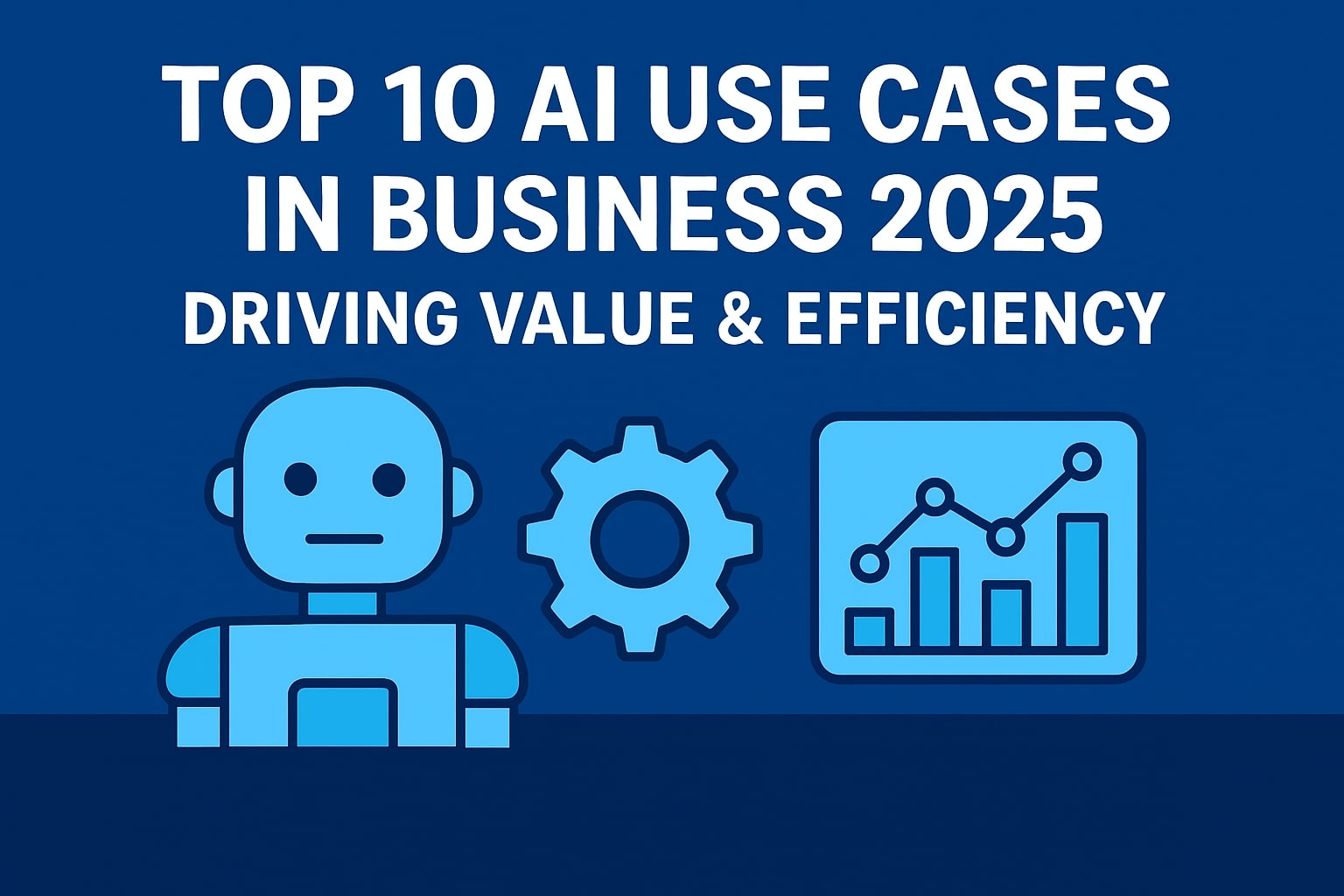Top 10 AI Use Cases in Business 2025: Driving Value & Efficiency
In 2025, AI has moved from an experimental technology to a core operational component for businesses of all sizes. The focus is now on practical AI applications that deliver clear ROI. Here are the top 10 AI use cases that are transforming business operations and driving efficiency today.
1. Hyper-Personalized Marketing & Sales
This powerful AI use case involves analyzing vast customer data sets to deliver individualized marketing messages, product recommendations, and sales outreach at scale. This moves beyond basic personalization to truly predicting customer needs and behaviors.
Impact: Dramatically increases conversion rates and customer lifetime value.
Outbound Link: See how Salesforce Einstein AI enables personalization.
Suggested Image Alt Text: “Dashboard showing AI-driven customer personalization engine for marketing and sales use case”
2. AI-Powered Customer Service Agents
Beyond simple chatbots, these advanced AI agents represent a critical use case for customer support. They handle complex inquiries, resolve issues autonomously, and provide 24/7 support, escalating to humans only when necessary.
Impact: Lowers support costs while improving customer satisfaction scores.
Outbound Link: Explore Intercom’s AI-powered customer service solutions.
Suggested Image Alt Text: “AI customer service agent interface handling multiple complex queries simultaneously”
3. Automated Business Process Optimization
This AI application involves using machine learning to map, analyze, and optimize complex workflows across departments like finance, HR, and supply chain. It identifies bottlenecks and automates repetitive, manual tasks from start to finish.
Impact: Significant operational efficiency gains and reduced human error.
Outbound Link: Learn about UiPath’s AI-driven process mining.
Suggested Image Alt Text: “Visualization of AI optimizing a complex business process workflow with highlighted efficiencies”
4. Predictive Supply Chain Management
A vital AI use case for logistics and operations, where models forecast demand, predict potential disruptions, and optimize inventory levels and logistics routes in real-time, creating a resilient and efficient supply chain.
Impact: Reduces costs, minimizes stockouts and overstock, and mitigates risk.
Outbound Link: Discover IBM’s AI-powered supply chain solutions.
Suggested Image Alt Text: “AI predictive supply chain dashboard showing real-time logistics optimization and risk alerts”
5. AI-Assisted Software Development
This use case sees AI tools acting as pair programmers, suggesting code, generating functions, and debugging in real-time. It’s one of the most adopted AI applications, significantly accelerating development cycles.
Impact: Increases developer productivity and allows teams to ship code faster.
Outbound Link: Try GitHub Copilot for AI-assisted coding.
Suggested Image Alt Text: “Developer using AI-assisted coding tool with real-time code suggestions and automation”
6. Intelligent Document Processing (IDP)
This practical AI use case automates the extraction, categorization, and processing of data from invoices, contracts, forms, and emails. It understands context and feeds data directly into business systems like ERP or CRM.
Impact: Automates tedious data entry and unlocks value from unstructured data.
Outbound Link: Learn about Appian’s Intelligent Document Processing.
Suggested Image Alt Text: “AI system automatically processing and categorizing a stack of various document types”
7. Dynamic Risk Management & Fraud Detection
A crucial AI application for finance and security, where systems continuously analyze transaction patterns and user behavior to detect anomalies and fraudulent activity in real-time, far more accurately than traditional rule-based systems.
Impact: Protects revenue and reduces financial losses from fraud.
Outbound Link: Explore SAS AI-powered fraud detection.
Suggested Image Alt Text: “AI fraud detection system identifying suspicious financial transactions in real-time dashboard”
8. Strategic AI-Driven Data Analysis
This advanced AI use case moves beyond generating reports to having AI analysts sift through vast company data to uncover hidden patterns, predict market shifts, and provide actionable strategic recommendations to leadership.
Impact: Enables data-driven decision-making at a strategic level.
Outbound Link: See Tableau’s AI analytics capabilities.
Suggested Image Alt Text: “Executive viewing an AI-driven strategic dashboard with predictive insights and recommendations”
9. AI for Talent Acquisition and HR
This HR-focused AI application streamlines recruiting by screening resumes, scheduling interviews, and reducing bias in hiring. Internally, it helps with personalized employee learning paths and predicting attrition.
Impact: Improves the quality of hires and enhances employee retention.
Outbound Link: Discover Workday’s AI-powered talent management.
Suggested Image Alt Text: “HR manager using an AI-powered recruitment platform to screen and identify top candidates”
10. Generative Content Creation at Scale
This creative AI use case allows businesses to generate first drafts of marketing copy, social media posts, and product descriptions at scale, which are then refined by humans. It’s a key application of AI tools like Jasper and Copy.ai.
Impact: Scales content marketing efforts and frees up creative teams for high-level strategy.
Outbound Link: Explore Jasper AI for content creation.
Suggested Image Alt Text: “Marketer using an AI content generation platform to produce multiple marketing assets simultaneously”
Conclusion: Integrating AI Use Cases for Business Transformation
The common thread across all these AI applications is that AI is no longer a standalone project. It is an integrated capability that enhances every business function, from the front office to the back office. The businesses winning in 2025 are those that have successfully woven these AI use cases into their core operations to work smarter, not just harder. For more on the tools enabling this shift, see our list of essential AI tools.
